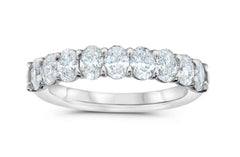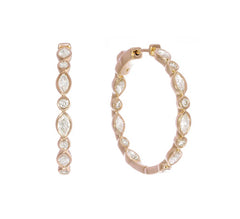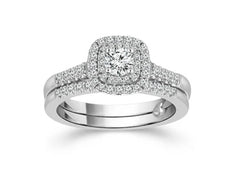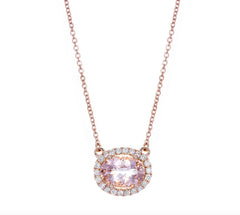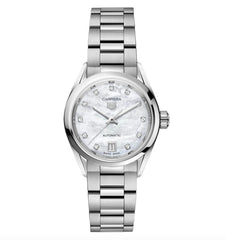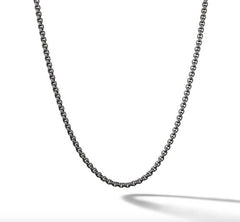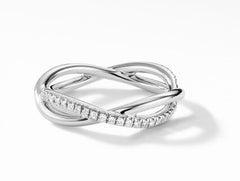There is a lot to consider when purchasing a piece of jewelry. Whether it is a gift for a loved one, a unique piece for yourself, or a ring to pop the question with, a lot of thought goes into each decision.
One choice you must make when buying jewelry concerns the material used to make the piece. Jewelry is often made with one or more metals, and learning about all your options will help you make the best decision for your special piece.
5 Popular Metal Options for Your Jewelry
There are many metals used for jewelry. Consider the elements of your piece — gemstones, how often it will be worn, and what kind of jewelry it is — as you decide on the right metal for your jewelry. Selecting a metal for diamond earrings may differ from picking the perfect engagement ring metal.
Do your research and consider your own style. Each metal type has pros and cons, but take the time to find the right jewelry metal for you, and you will forget about the rest.
1. Valuable Platinum Jewelry
Platinum is one of the most popular metals when purchasing or designing jewelry. Platinum jewelry is often more expensive than other options because of the popularity and scarcity of the metal. While platinum does not tarnish, it will take on a natural patina that can be left for a vintage-inspired look or buffed away.
Platinum jewelry is beautiful and strong, making it both a practical and symbolic choice for engagement rings. An engagement ring with a platinum setting and diamonds is sure to shine. Diamonds are reflective stones and, when combined with a sparkling platinum jewelry setting, they can often look bigger than they are.
The primary downside to platinum jewelry is the price. There are less expensive options that look similar to platinum, but many people believe platinum is a worthwhile investment for its durability and brilliance.
2. Versatile Gold Jewelry
Gold is a popular and versatile metal that has been used in jewelry for centuries. It has been a symbol of nobility and wealth for over 6,000 years, and gold jewelry is the perfect gift to show you love someone.
Because gold is very soft, it is often mixed with other metals to give it strength and a defining color. The purity of the gold is measured in karats. Gold can be mixed with multiple different metals, including nickel, silver, and copper, and each metal gives gold a different hue. That is why gold jewelry is not just yellow —multiple gold alloys have individual looks.
There are three primary gold varieties that are currently popular in jewelry. White gold, yellow gold, and rose gold are all related but are refined differently, giving each a distinct color. Many pieces of gold jewelry can be customized with any of these golds, allowing you to choose your favorite.
Yellow Gold Jewelry
Yellow gold is the most traditional gold available. When someone says “gold” without another qualifier, they are typically speaking about yellow gold. There are many reasons you should consider yellow gold, the first being yellow gold jewelry is as beautiful as it is classic.
Yellow gold jewelry typically combines pure gold with silver, copper, and zinc to strengthen the metal while keeping the yellow hue. Of all the gold varieties, yellow gold is the easiest to maintain and the most hypoallergenic.
Because it is one of the most recognizable and familiar jewelry metals, yellow gold often pairs well with other metals. Whether within the same jewelry or across different pieces, yellow gold matches well with platinum or white gold. A beautiful set of gold and diamond earrings would be the perfect addition to any jewelry box.
White Gold Jewelry
White gold jewelry was developed as an alternative to platinum when that metal was being used for war efforts in World War II. A less expensive but still elegant choice, many people select white gold over platinum when looking at engagement rings and other meaningful jewelry.
Like all gold used in jewelry making, white gold is an alloy that mixes pure gold with other metals. White gold is usually made with naturally white metals like nickel, silver, or palladium. This helps strengthen the metal while giving it that silvery hue.
White gold jewelry is popular in everything from the ever-important diamond bridal set to simple earrings. These pieces have an air of sophistication while remaining more affordable than platinum. This classic look isn’t going away, and we’re thankful for the option of white gold jewelry.
Rose Gold Jewelry
Rose gold, another alloy of gold, has grown in popularity in recent years. Rose gold is made with copper, which gives it a pink hue. It was first used in the early 19th century by Carl Faberge in his Faberge Eggs but gained popularity in the United States during the 1920s.
Rose gold is often seen as elegant and feminine. It has a romantic feel, with the warm rose gold color hinting toward hearts and flowers. Rose gold often looks best with soft pastels and neutrals.
Pair rose gold with a colored gemstone, like in a morganite and diamond necklace, for a striking piece of jewelry that will catch the eye. There is nothing wrong with having a bit of color in your jewelry, and rose gold is one way to achieve it.
3. Timeless Silver Jewelry
Silver is a natural precious metal that, like gold, is often mixed with other metals to strengthen it. Silver jewelry does not scratch easily, but it will tarnish over time and needs to be polished to keep its bright surface.
Most silver jewelry is considered sterling silver, which is 92.5% silver and 7.5% other metals, usually copper. Other silver jewelry may be silver plated, which means the silver is just a coating on top of a cheaper base metal. This plating is typically thin and wears off over time.
Sterling silver jewelry is timeless and will always be in style. Dressed up or dressed down, sterling silver can complement almost any outfit. Pick up a silver chain necklace as a staple for your wardrobe for years to come.
4. Stainless Steel Jewelry
Stainless steel is known for its incredible durability. And as its name implies, it is less likely to corrode or tarnish than sterling silver jewelry. It’s a great choice for everyday jewelry pieces.
Watches are often made with stainless steel. Unlike leather or fabric, a stainless steel watch band will not fade or wear out over time. Even after years of use, a stainless steel watch will be functional and beautiful.
Stainless steel jewelry is sometimes more masculine, like a steel chain necklace, but the metal is often used in pieces for both men and women. A stainless steel ladies’ watch can be the perfect timepiece to bring your outfit together. When reaching for a piece that you don’t have to worry about getting messed up, stainless steel is the way to go.
5. Alternative Metals for Jewelry
Of course, there are dozens of metals used in jewelry making. Depending on the metal and how the jewelry is constructed, many alternative metals cannot be sized or repaired, but they are often strong enough to avoid damage.
Alternative metals are seen in many different applications. One popular place to find alternative metals is when shopping for modern men’s wedding bands. Popular alternative metals for these wedding bands include:
- Tungsten
- Titanium
- Cobalt
- Zirconium
These alternative metals provide a unique look for a special groom on his wedding day. Be sure to find the right size before purchasing, and feel confident as she slips your striking ring onto your finger as she says her vows.
What About Mixed-Metal Jewelry Designs?
Of course, you don’t have to choose just one metal for your jewelry. Mixed-metal pieces are a popular way to get a new look with two or more metals. For example, a white gold and yellow gold signet ring is a stunning piece with two complementary metals and diamonds to make it all shine bright. As an added plus, you can wear two-toned jewelry pieces with anything since they usually pair well with both gold and silver.
Other Considerations for Choosing the Right Jewelry Metal
Having more knowledge of the primary metals used while making jewelry is a wonderful start to choosing the best setting for your piece. There are a few other things to consider beyond the basics. While all are not applicable in every situation, it is good to examine each consideration when making your decision.
Sentimental Meaning Behind Jewelry Metals
When choosing a metal for a new piece of jewelry, consider if the jewelry has a specific sentimental meaning. Many anniversaries traditionally have a specific gift associated with them, and metals often make an appearance on that list, including:
- 6th anniversary: Iron
- 7th anniversary: Copper
- 8th anniversary: Bronze
- 10th anniversary: Tin
- 11th anniversary: Steel
- 25th anniversary: Silver
- 50th anniversary: Gold
While many people get creative with these traditional suggestions, several metals easily translate to jewelry. Silver jewelry and gold jewelry are special gifts for a 25th and 50th anniversary.
Some more modern anniversary lists place silver at the 16th anniversary, bronze at the 19th anniversary, and platinum at the 20th anniversary. Whichever list you are working with, a unique piece of jewelry or anniversary band while you reminisce about the past and dream about the future is perfect for a milestone anniversary.
Be Aware of Metal Allergies
It is essential to take allergies into account when shopping for jewelry. Some people have bad reactions to different metals, and it would be a shame to gift someone a piece they cannot comfortably wear.
According to dermatologists, a jewelry allergy resembles a poison ivy outbreak with redness, bumps, and irritation. You can typically tell if you are allergic to your jewelry if a rash appears around the jewelry, especially in piercings where the jewelry goes through the skin.
Nickel is the most common jewelry allergy, so doctors recommend avoiding jewelry with nickel in it. This includes pieces labeled “gold plated,” as the gold can wear off and expose a more troubling metal underneath. In general, platinum jewelry and sterling silver jewelry are safe options for people with sensitive skin. With gold jewelry, the higher the purity — 24k being the best option — the less likely it is to cause a reaction.
What Looks Best with Your Skin Tone?
While you may love the look of a specific metal, it is possible to find one that suits your skin tone better than the rest. Like any clothing, makeup, or accessory, specific metallic hues can look great against your skin while other colors clash or wash you out.
Experts have found that certain skin tones look best with specific metals. Consider their opinion and try on some pieces to see if you agree:
- Fair skin with red undertones looks good with silver jewelry
- Fair skin with pale undertones looks good with 9kt or 14kt yellow or white gold jewelry
- Olive skin looks good in almost any metal
- Dark skin looks good in gold jewelry
- Skin with yellow undertones looks good in gold jewelry or rose gold jewelry
Many pieces come in your choice of metal, like an engagement ring with several setting options, giving you the flexibility to find the most flattering jewelry for you. Fortunately, these are suggestions; at the end of the day, what is most important is how your jewelry makes you feel.
The Upkeep of Your Metal Jewelry
Some metals need more care than others. Silver, for example, will tarnish if it is not stored and polished correctly. White gold jewelry often has rhodium plating to combat a yellowish tint of the gold and to provide a bright finish, and this rhodium plating has to be re-plated when it is worn down and dull.
Platinum is incredibly durable, and platinum jewelry requires very little maintenance. It does not tarnish and does not require rhodium plating. This is one reason many people favor platinum jewelry, especially for important pieces that will endure a lot of wear, like engagement rings.
Proper jewelry care may include bringing your jewelry to a professional jeweler for repairs, cleaning, and upkeep on a regular basis. Some metals will need professional upkeep more often. Consider the price of this maintenance when choosing a metal for your jewelry.
Selecting the right metal for your jewelry can feel like a big task, but as soon as you know the look you want, the price point you have to meet, and the durability you need, you will be able to pick the right metal for you. Ask questions of your jeweler and ensure you are purchasing the perfect piece for your needs.



